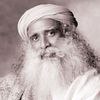In the Indian tradition, Shiva has many forms, each representing a powerful possibility for inner evolution. Sadhguru looks at a few forms, and explains the basis underlying each of them.
Ardhanarishvara
Generally, Shiva is referred to as the ultimate man, but in his Ardhanarishvara form, one half of him is a fully developed woman. Masculine and feminine do not mean male and female. These are certain qualities. Essentially, it is not two people longing to meet; it is two dimensions of life longing to meet. If the inner masculine and feminine meet, you are in a perpetual state of ecstasy.
Nataraja
Shiva as Lord of Dance is one of his most significant forms. The Nataraja form represents the exuberance and dance of creation, which self-created itself from eternal stillness. I visited CERN, the European Organization for Nuclear Research in Switzerland, which is the physics laboratory on the planet, where all the atom-smashing takes place. There is a Nataraja statue in front of the entrance, because they identified that there is nothing in human culture which is closer to what they are doing right now.
Adi Yogi
In the yogic tradition, Shiva is not worshiped as a God. He is the Adi Yogi, the first yogi, and the Adi Guru, the first guru from whom the yogic sciences originated. The first full moon during the six-month period of Dakshinayana, the sun's southern run, is Guru Pournami. This is when the Adi Yogi began the transmission of the yogic sciences, the most powerful tools necessary to raise human consciousness. This did not come from a certain civilization or thought process, but from an inner realization - it was just an outpouring of himself. You cannot change a single thing about yoga even today because the Adi Yogi said everything that could be said in such beautiful and intelligent ways. You can only spend your lifetime trying to decipher it.
Kalabhairava
Kalabhairava is a deadly form of Shiva. When the moment of death comes, many lifetimes play out with great intensity. After that, nothing of the past remains in you. Undoing your "software" is painful. But this happens at the moment of death, so you have no choice. Kalabhairava makes it as brief as possible, so suffering ends quickly. If it is mild, it goes on forever.
Triambaka
Shiva has always been referred to as "Triambaka" because he has a third eye. A third eye does not mean a crack in the forehead, it simply means that his perception has reached its ultimate possibility. The third eye is the eye of vision. The two physical eyes are just sensory organs, they feed the mind with all kinds of nonsense because what you see is not the truth.
What we refer to as Shiva is nothing but the very embodiment of ultimate perception. It is in this context that the Isha Yoga Center celebrates Mahashivarathri. It is an opportunity and possibility for all to raise their perception by at least one notch. This is what Shiva is about and this is what yoga is about. It is the science of inner evolution.
Bholenath
Shiva is always seen as a very powerful being, and at the same time, as one who is not so crafty with the world. "Bholenath" means innocent, childlike or even ignorant. It is not that he lacks intelligence, but he does not care to use it in all those petty ways. Most intelligent people are very easily taken for a ride because they cannot subject their intelligence to petty things. It is a very low level of intelligence that is crafty and shrewd, and can easily outsmart an intelligent person. That may mean something in terms of money or society, but it does not mean anything in terms of life. When we say intelligence, we are looking at allowing that dimension which makes life happen, to be in full flow.
